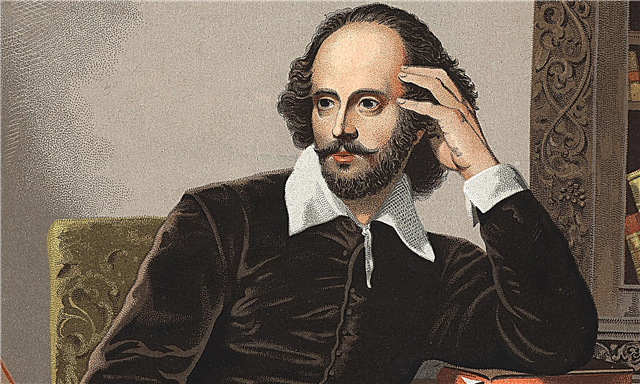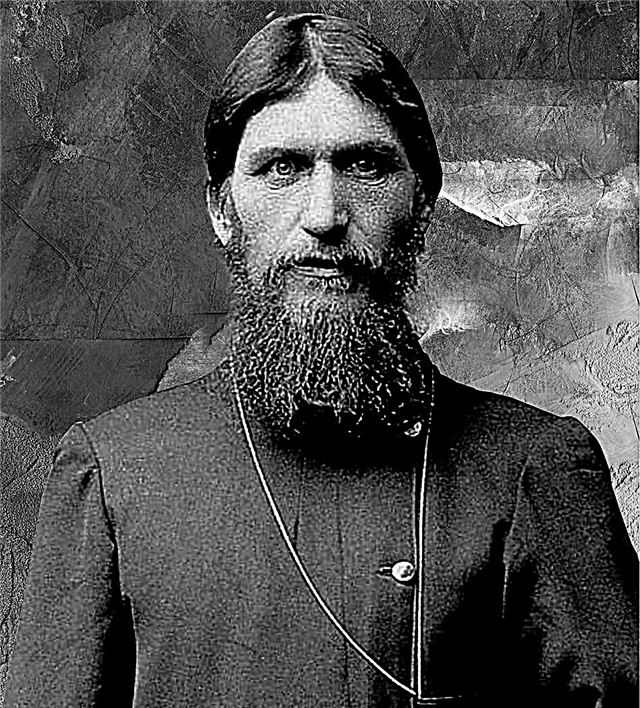Richard I the Lionheart (1157-1199) - English king and general from the Plantagenet dynasty. He also had a little-known nickname - Richard Yes-and-No, which meant that he was laconic or that it was easy to bend him in one direction or another.
Considered one of the most prominent crusaders. He spent most of his reign outside England in the crusades and other military campaigns.

There are many interesting facts in the biography of Richard I the Lionheart, which we will talk about in this article.
So, here is a short biography of Richard 1.
Biography of Richard I the Lionheart
Richard was born on September 8, 1157 in the English city of Oxford. He was the third son of the English monarch Henry II and Alienora of Aquitaine. In addition to him, four more boys were born to Richard's parents - William (died in childhood), Henry, Jeffrey and John, as well as three girls - Matilda, Alienora and Joanna.
Childhood and youth
As the son of a royal couple, Richard received an excellent education. At an early age, he began to show military abilities, which is why he loved to play games related to military affairs.
In addition, the boy was predisposed to politics, which helped him in his future biography. Every year he liked to fight more and more. Contemporaries spoke of him as a brave and valiant warrior.
Young Richard was respected in society, having managed to achieve unquestioning obedience from the aristocrats in his domain. An interesting fact is that, being a devout Catholic, he paid great attention to church festivals.
The guy took part in religious rituals with pleasure, sang church songs and even "conducted" the choir. In addition, he liked poetry, as a result of which he tried to write poetry.
Richard the Lionheart, like his two brothers, loved his mother very much. In turn, the brothers treated their father coldly for neglecting their mother. In 1169 Henry II divided the state into duchies, dividing them between his sons.
The following year, Richard's brother, crowned under the name of Henry III, rebelled against his father for being deprived of many of the powers of ruler. Later, the rest of the monarch's sons, including Richard, joined the riot.
Henry II took over the rebellious children and also captured his wife. When Richard found out about this, he was the first to surrender to his father and asked him for forgiveness. The monarch not only forgave his son, but also left him the right to own the counties. As a result, in 1179, Richard was awarded the title of Duke of Aquitaine.
The beginning of the reign
In the summer of 1183, Henry III died, so the English throne passed to Richard the Lionheart. His father urged him to transfer power in Aquitaine to his younger brother John, but Richard did not agree to this, which led to a quarrel with John.
By that time, Philip II Augustus had become the new French king, claiming the continental lands of Henry II. Wanting to get possession, he intrigued and turned Richard against his parent.

In 1188 Richard the Lionheart became an ally of Philip, with whom he went to war against the English monarch. And although Heinrich bravely fought with his enemies, he still could not defeat them.
When the seriously ill Henry 2 learned about the betrayal of his son John, he experienced a strong shock and quickly fainted. A few days later, in the summer of 1189, he died. Having buried his father, Richard went to Rouen, where he received the title of Duke of Normandy.
Domestic policy
After becoming the new ruler of England, Richard I the Lionheart freed his mother first. It is curious that he forgave all of his father's associates, with the exception of Etienne de Marsay.
No less interesting is the fact that Richard did not shower the barons with awards, who switched to his side during the conflict with his father. On the contrary, he condemned them for venality and betrayal of the current ruler.
Meanwhile, the mother of the newly-made king was engaged in the release of prisoners sent to prisons by order of the late husband. Soon, Richard 1 the Lionheart returned the rights of high-ranking officials whom they had lost under Henry 2, and returned to the country the bishops who had fled beyond its borders due to persecution.
In the fall of 1189, Richard I was officially enthroned. The coronation ceremony was overshadowed by Jewish pogroms. Thus, his reign began with an audit of the budget and the reporting of officials in the royal domain.
For the first time in the history of England, the treasury began to be replenished through the trade of government offices. Dignitaries and clergy, unwilling to pay for government seats, were immediately arrested and imprisoned.
During the 10-year rule of the country, Richard the Lionheart was in England for only about a year. During this period of his biography, he focused on the formation of the land army and navy. For this reason, a lot of funds were spent on the development of military affairs.
Being outside the homeland for years, England, in Richard's absence, was actually ruled by Guillaume Longchamp, Hubert Walter and his mother in turn. The monarch arrived home for the second time in the spring of 1194.
However, the king returned to his homeland not so much for rule as for the next collection of tribute. He needed money for the war with Philip, which ended in 1199 with the victory of the British. As a result, the French had to return the territories previously captured from England.
Foreign policy
As soon as Richard the Lionheart became king he set out to organize a crusade to the Holy Land. After completing all the appropriate preparations and collecting funds, he went on a hike.
It is worth noting that Philip II also joined the military campaign, which led to the unification of the English and French crusaders. An interesting fact is that the armies of both monarchs numbered 100,000 soldiers each!

The long hike was accompanied by various difficulties, including unfavorable weather. The French, who had arrived in Palestine before the British, began to besiege Acre.
Meanwhile, Richard the Lionheart fought with the army of Cyprus, led by the impostor king Isaac Comnenus. After a month of heavy fighting, the British managed to prevail over the enemy. They plundered the Cypriots and decided from that time on to call the state the Kingdom of Cyprus.
After waiting for the allies, the French launched a swift attack on Acre, which surrendered to them about a month later. Later, Philip, citing illness, returned home, taking with him most of his soldiers.
Thus, significantly fewer knights remained at the disposal of Richard the Lionheart. Nevertheless, even in such numbers, he managed to win victories over opponents.
Soon, the army of the commander was close to Jerusalem - at the Ascalon fortress. The crusaders entered into an unequal battle with the enemy's 300,000-strong army and emerged victorious in it. Richard successfully participated in battles, which raised the morale of his soldiers.
Approaching close to the Holy City, the military commander examined the state of the troops. The state of affairs caused great concern: the soldiers were exhausted by the long march, and there was also an acute shortage of food, human and military resources.
After deep reflection, Richard the Lionheart ordered to return to the conquered Acre. Having hardly fought off the Saracens, the English monarch signed a 3-year truce with Sultan Saladin. According to the agreement, Christians were entitled to a safe visit to Jerusalem.

The crusade led by Richard 1 extended the Christian position in the Holy Land for a century. In the fall of 1192, the commander went home with the knights.
During a sea voyage, he got into a severe storm, as a result of which he was thrown ashore. Under the guise of a wanderer, Richard the Lionheart made an unsuccessful attempt to pass through the territory of the enemy of England - Leopold of Austria.
This led to the fact that the monarch was recognized and immediately arrested. The subjects ransomed Richard for a large reward. Returning to his homeland, the king was favorably received by his vassals.
Personal life
In the middle of the last century, British biographers raised the question of the homosexuality of Richard the Lionheart, which still causes a lot of discussion.
In the spring of 1191, Richard married the daughter of the king of Navarre, named Berengaria of Navarre. Children in this union were never born. It is known that the monarch had an amorous relationship with Amelia de Cognac. As a result, he had an illegitimate son, Philippe de Cognac.
Death
The monarch, who was so fond of military affairs, died on the battlefield. During the siege of the Chaliu-Chabrol citadel on March 26, 1199, he was seriously wounded in the neck from a crossbow, which became fatal for him.
Richard the Lionheart died on April 6, 1199 from blood poisoning in the arms of an elderly mother. At the time of his death, he was 41 years old.
Photo by Richard the Lionheart














